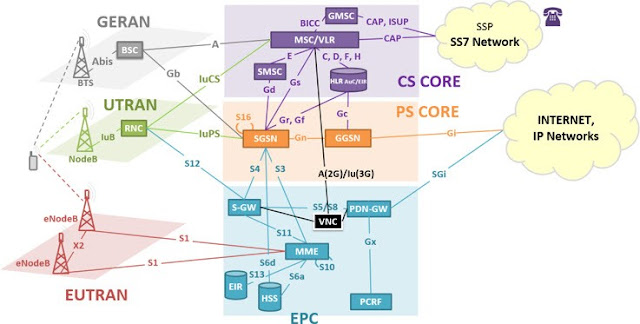This page covers LTE frequency bands in INDIA and mention 4G LTE Phones in INDIA.It mentions Indian telecom operators offering 4G LTE service such as Airtel,Aircel,Reliance Jio Infocom Ltd,Vodafone.
Currently in INDIA, 4G LTE band-40 having 2300 to 2400 MHz (TD-LTE) frequency range is active (online) and offered by the operators in indian territory. The other LTE band in 1800 MHz (FDD-LTE) frequency is also auctioned by the INDIA government. But this LTE band is not offered for LTE by any telecom operators. Refer complete list of LTE frequency bands with frequency range.
This 100MHz bandwidth of Band-40 from 2300MHz to 2400MHz is divided into downlink and uplink. Downlink refers to transmissions from eNB(i.e. base station) to UE(i.e. mobile user) and uplink refers to transmission from UE to eNB.
As we know there are two topologies exist in LTE technology viz. LTE TDD(or TD-LTE) and LTE FDD. TDD is the time division duplex and FDD is Frequency division duplex. In TDD one frequency is used at different times by both uplink and downlink. In FDD, two separate frequencies are allocated one each to uplink and downlink. Hence in FDD simulateneous transmissions in both uplink and downlink can exist. Refer FDD vs TDD.
Indian telecom operator offering 4G LTE service
In India four major telecom operators are leading to provide LTE service. The telecom operators include Airtel, Aircel, Reliance Jio Infocom Ltd and Vodafone. Airtel is the first one who has introduced LTE service in INDIA. Airtel uses 2300 MHz TD-LTE band to offer the service. Aircel is the second one who will be providing the LTE service in the same 2300MHz TD-LTE band.
Reliance Jio Infocom Ltd is going to start the 4G LTE services in both TD-LTE(2300MHz) and FD-LTE(1800MHz) frequency bands. Vodafone will also provide the LTE service in FDD-LTE frequency band(1800MHz).
4G LTE Phones in INDIA
As we know there are various frequency bands supported in LTE standard as per different frequency allotment in different counries of the world. Before buying 4G LTE phones in INDIA one has to know which LTE frequency bands in INDIA are available and supported by the indian telecom operators. As currently only TD-LTE 2300 band is online, one need to purchase LTE-phone supporting this band. There are LTE phones which supports both of these frequency bands. So if one buys these phones then it will support current TD-LTE band and will also support FDD-LTE once it will be available. Refer list of LTE phones.
Refer following table lists out 4G LTE phones in INDIA which can be used by the users.
| LTE Phone | Band Support |
|---|---|
| LG G2 | Supports both TD-LTE and FDD-LTE bands |
| LG F70 | Supports both bands |
| Samsung Galaxy Alpha | Supports both both frequency bands |
| iphone-5S | Supports both frequency bands |
| iphone-5C | Supports both bands |




























